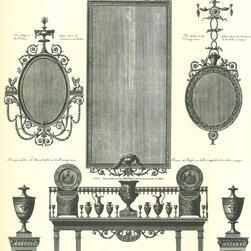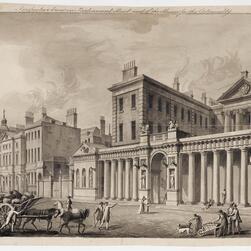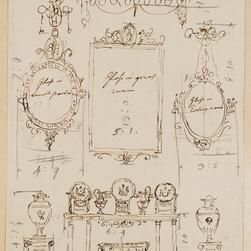To complement our current exhibition Building a Dialogue: The architect and the client, two members of the Soane Museum’s curatorial staff, Frances Sands and Tom Drysdale will write fortnightly blog pieces on particular objects and themes within the exhibition. This week Frances Sands will consider how architects marketed their practice.
In addition to an architect’s reputation, the best means of marketing an architectural practice was through publication of past endeavours. Robert Adam was a master of advertising his own brand. He produced two major architectural treatises. First was ‘The Ruins of the Palace of the Emperor Diocletian…’ (1764) with which he marketed himself as a connoisseur of antiquity and gave academic credence to his style. Second was ‘The works in architecture of Robert and James Adam’ (1773-78, 1779, 1822) a three-volume retrospective of his greatest masterpieces. Extant within the drawings collection at the Soane Museum is a rough preliminary design in Robert Adam’s own hand showing how one of the plates for ‘The works in architecture…’ was originally laid out.
Further to this, Adam produced individual drawings for engraving and sale. This was done in the case of the Admiralty Screen, his first executed public commission in London, of which he was apparently exceedingly proud. Thomas Ripley’s Admiralty was built in 1723-26, but its boundary wall was demolished for street widening in 1759, prompting Adam’s commission to build a screen. This view by the Adam office draughtsman, Agostino Brunias, was made for publication, and shows the Screen as executed, albeit with additional sculptural ornament. There is evidence that the sheet was folded four times, most likely when it was sent to Francis Patton to be engraved for publication. The Admiralty Screen engravings were sold from February 1761 at Andrew Millar’s bookshop on the Strand for 2s.6d.



